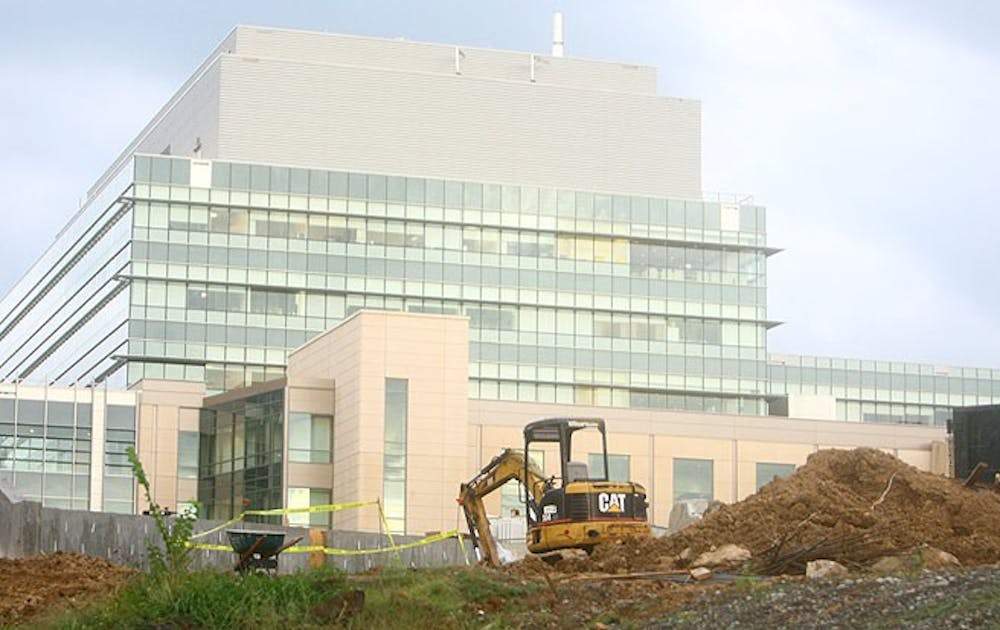Classes in the Medical School’s newest building will emphasize flexibility and collaboration.
The Mary Duke Biddle Trent Semans Center for Health Education will open its doors for classes in January. Construction of the six-story building is nearing completion, and the facility will be located in the heart of the medical school campus, next to the Seeley G. Mudd Building and the Duke Cancer Center. The new facility will include a 400-seat great hall on the ground level, a 140-seat amphitheater and six networked teaching labs with retracting walls on the third floor.
The building was initially funded with $35 million from the Charlotte-based Duke Endowment.
“The Trent Semans Center was built because we needed a space that was of the same quality as the educational program that we are delivering at Duke,” said Dr. Edward Buckley, vice dean for medical education. “We tried to design a building that had multiple functionalities, that can accommodate any need that may arise.”
The design of the Trent Semans Center is flexible in order to accommodate changes in the nature of medical education in coming years, Buckley said. In the amphitheater, the movable chairs allow students to work on small group activities in a large space. Additionally, although there is one large hall that can fit 400 people, the room is adjustable to form smaller rooms for fewer people. There are also small discussion rooms in which groups of 10 to 15 students can gather to study.
Medical school classes, which have traditionally been lecture-based, are making a transition toward teamwork-style learning. By having movable walls that can form varying classroom sizes, students can break off into groups to work and discuss projects together.
The design of TSCHE invites collaboration among medical students, said Dr. Linton Yee, one of the course directors for Body and Disease, a first-year medical school course that will be taught in TSCHE.
“Rather than having professors present material, students can spend more time reviewing problems together,” he said. “It’s a more effective way of utilizing class time.”
Another class that will be moving into TSCHE in January is Brain and Behavior, a first-year course that introduces human neuro-anatomy. The class, which involves the study of human brains obtained at autopsy, will be better equipped in rooms in the TSCHE building, said Leonard White, associate professor and director of education for the Duke Institute for Brain Sciences.
“When we are studying human tissue samples such as the brain, we would want a place that has proper ventilation and proper surfaces for displaying them,” White said. “The Trent Semans building will accommodate these needs, while providing other tools such as wireless connection and projectors.”
The opening of TSCHE will offer a central gathering spot for medical students, like the Link in Perkins Library, Buckley added. The design of the building facilitates communication between medical students and faculty. This, in turn, fosters the hidden curriculum of medical school, which occurs when people come together to discuss their ideas.
“I’m definitely excited to move in there,” Yee said. “It makes the medical school more unified, and incoming first-year students will be able to interact with graduating senior students.”
Get The Chronicle straight to your inbox
Signup for our weekly newsletter. Cancel at any time.

